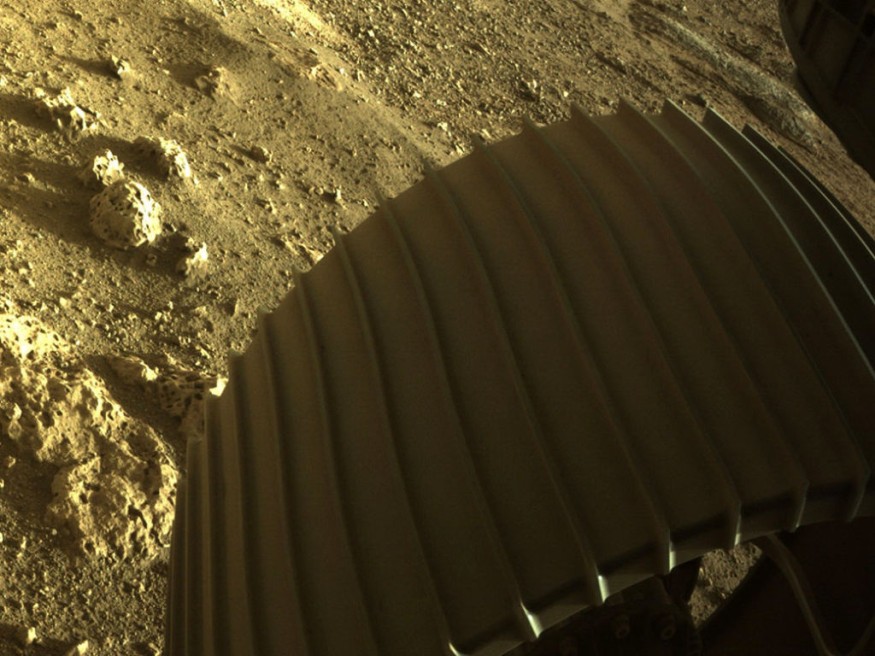As NASA plans to bring humans Mars by 2030, the space agency's Perseverance probe and Curiosity rover continue to explore the Red Planet's deep interior. Here are five new findings of Mars that have piqued the experts' interest.

1. Regional Dust Storms Drying Mars
NASA revealed in August 2021 that regional dust storms "have a big role in drying out" Mars.
Scientists believe Mars had more water billions of years ago. But they're confused as to why the water escaped.
However, scientists uncovered one cause using three spacecraft: storms warm up higher altitudes of the chilly atmosphere.
"In the higher reaches of Mars, where the atmosphere is sparse, water molecules are left vulnerable to ultraviolet radiation, which breaks them up into their lighter components of hydrogen and oxygen," NASA said.
"Hydrogen, which is the lightest element, is easily lost to space, with oxygen either escaping or settling back to the surface," the space agency added.
2. Volcanic Super Eruptions
Scientists have discovered evidence of tens of thousands of "super eruptions," the most powerful volcanic explosions ever recorded.
They did so by looking at the geography and mineral composition of a section of Mars' Arabia Terra area in the northern hemisphere.
The study titled, "Stratigraphic Evidence for Early Martian Explosive Volcanism in Arabia Terra," provides a stunning picture.
"Spewing water vapor, carbon dioxide, and sulfur dioxide into the air, these explosions tore through the Martian surface over a 500-million-year period about 4 billion years ago," they wrote in the journal Geophysical Research Letters.
3. Mars' Lost Lake, River Delta
Since 2013, when NASA's Curiosity rover discovered smooth, rounded stones on the Martian surface similar to those found in Earth's rivers, scientists have had confirmation that water previously flowed on Mars.
The Jezero crater region was formerly filled with water and was home to an ancient river delta, according to recent discoveries.
More information on Jezero's aquatic past was provided in a study published in 2021 regarding NASA's Perseverance Mars rover mission. The study title is "Perseverance Rover Reveals an Ancient Delta-Lake System and Flood Deposits at Jezero Crater, Mars."
NASA said the rover's photographs revealed steep escarpments, or scarps in the delta, that developed from silt piling at the entrance of an old river that formerly supplied the crater's lake.
4. Marsquake
Thanks to NASA's Insight probe, scientists obtained fresh information on Mars' makeup in July 2021.
A seismometer on the probe, which arrived on Mars in 2018, can detect tremors beneath the surface. As a result, he was able to record the first-ever Marsquake.
Researchers calculated that Mars' crust might be 12 to 23 miles thick based on Insight data. Earth's crust varies in thickness from a few miles to more than 45 miles, making it roughly twice the size of Mars.
"Three papers based on the seismometer's data were published in Science, providing details on the depth and composition of Mars' crust, mantle, and core, including confirmation that the planet's center is molten. Earth's outer core is molten, while its inner core is solid; scientists will continue to use InSight's data to determine whether the same holds true for Mars," NASA said.
Scientists currently believe Mars' core is molten, but they have yet to ascertain if Mars' inner core is solid like Earth's.
5. Water Persistent on Mars
Martian rock samples claim that groundwater-potentially favorable to microbial life might have once been found on Mars for lengthy periods of time.
In early September, NASA's Perseverance rover took its first samples from the Jezero crater, and the results shocked many experts.
"It looks like our first rocks reveal a potentially habitable sustained environment," Perseverance project scientist Ken Farley of Caltech said in a NASA statement on Friday. "It's a big deal that the water was there a long time."
Check out more news and information on Space in Science Times.
© 2025 ScienceTimes.com All rights reserved. Do not reproduce without permission. The window to the world of Science Times.











